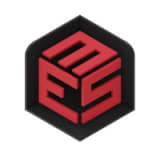This informal CPD article, ‘CPD in Engineering: Why It Matters and How to Get Started’, was provided by Muhammad Hasnain Raza at Mechesol Co., who deliver high-quality innovative product development solutions for domestic and industrial clients.
Continuing Professional Development (CPD) is not just an industry buzzword but the key to staying relevant in an evolving engineering landscape. In a rapidly changing field with new technologies, standards, and methods, CPD ensures that engineers remain at the forefront of innovation. However, what exactly is CPD, why is it important, and how can you get started? Let us explore this in detail.
Why CPD Matters
The engineering sector constantly evolves, driven by technological advancements, emerging standards, and new methodologies. To keep pace, engineers must continuously upgrade their skills and knowledge. Here are some key reasons why CPD is essential:
- Staying at the Forefront of Innovation: CPD helps engineers remain ahead in a competitive landscape, ensuring they can effectively leverage the latest tools and technologies. With new software, tools, and best practices constantly emerging, CPD helps engineers stay competent and excel in their roles.
- Demand for Skills: Employers highly value engineers who prioritize continuous learning and professional growth. CPD ensures that your skills remain current and relevant, enhancing your employability.
- Industry Requirements: Many industries mandate CPD to maintain high quality and safety standards. For example, regulatory bodies and licensing authorities often require engineers to demonstrate ongoing development while maintaining professional credentials. This makes CPD an essential part of professional practice, ensuring compliance and maintaining trust in engineering practices.
Benefits of CPD for Engineers
CPD brings numerous benefits to engineers, both at a personal and professional level:
- Career Advancement: Engaging in CPD is a powerful demonstration of your commitment to professional growth. It puts you in the driver's seat, making you more competitive for promotions and new opportunities. It's a clear sign of your adaptability and proactive approach to career development.
- Enhanced Skills: Continually upgrading your expertise ensures that your knowledge aligns with the latest industry standards. This not only makes you a more effective engineer but also boosts your confidence, enabling you to take on more challenging projects and roles with a sense of assurance.
- Networking Opportunities: CPD often involves attending seminars, workshops, webinars, and courses, providing valuable opportunities to connect with industry peers, thought leaders, and experts. Building these relationships can be instrumental in your career, opening doors to new possibilities and collaborations, and making you feel part of a larger professional community.














